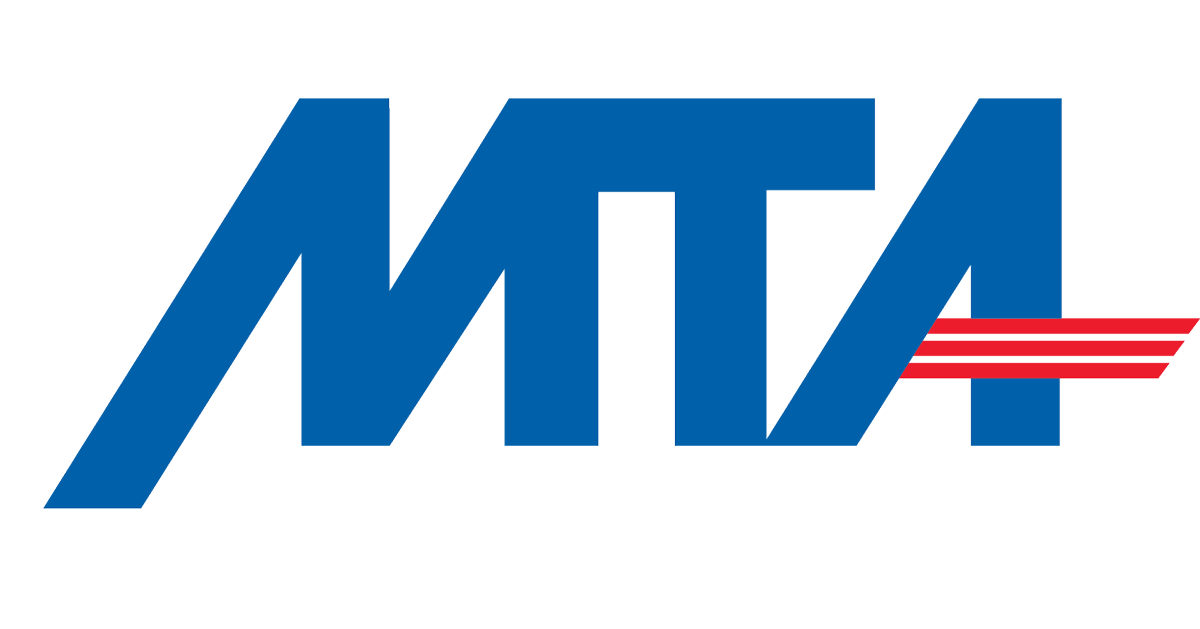

Based upon your observations and experience in your classroom and school what are your ideas for improving mental wellness for your students? For your fellow educators? For yourself?
Responses
School libraries
Nancy is totally right here. 15 years ago there were so many more schools with functioning libraries that offered solace, respite and so much more. One student back then was what I'd call a 'frequent flyer'. Running into his mother recently, she told me that the MS library and then the HS library was the factor that let her son be successful. Over the years, the library has offered sanctuary to after school clubs, safe lunch spots, safe holding spaces ---calm, cool collected ones---while waiting for the guidance counselor, psychologist or administration. It used to be that it was a…
Read the Full ResponseStudent/teacher Mental Wellness
It is clear that what is going on inside our schools when it comes to mental health needs is not sustainable or realistic in our schools today. They weren't before Covid and they certainly are even worse
now. The overall arching problem here - Students need more support than schools can provide and administrators are trying to minimize the problem. Resulting in teacher burnout and ongoing mental health issues in our schools.
Ive learned that most of the minimizing from district and state administration is because there is no funding for what we really need, so let's…
Save school libraries
Many of us remember our school libraries fondly - the heart of the school, a place to have a quiet moment with a book, work a puzzle, play a board game, or have a conversation with friends.
Sadly, this experience is no longer available to many of our students. My library is only open to students for 9 hours a week now. I share this space with the tech and music teachers. When none of us are in the room, it must be locked to prevent the music and tech materials stored there.
…
The Detrimental Effects of Standardized Testing on Student Mental Health and Classroom Dynamics: Insights from a Veteran Educator
As a veteran educator, I am deeply concerned about the destructive consequences of standardized testing, specifically the MCAS, on student mental health and the overall classroom environment. The COVID-19 pandemic has introduced additional stressors, such as coping with loss and economic uncertainty, making the impact of standardized testing even more significant. Regrettably, the prevailing educational landscape prioritizes test scores over the emotional and psychological well-being of our students.
Through my involvement with NBCSOS, a grassroots coalition comprising educators, students, families, elected officials, and community activists in Greater New Bedford, I have recognized that despite our differences, we…
Perspectives of a Clinical Psychology Professor
As a psychotherapist and state college clinical psychology professor, I know that mental health problems are enormously overdetermined and complex. Many scholars make their careers trying to map these interacting issues that produce suffering and incapacitate people; many of these issues are beyond the scope of our union to directly address. However, there are many salient issues that are within our power to address. These include:
1. DEBT. My students at MCLA are made enormously anxious by their student debt. It is not at all clear to them that they will see a return on their investment…
Frustrated
Developmentally Appropriate Curriculum INCLUDING PLAY
more social time with peers (through grade 12)
mental health workers in schools/safety for kids and staff
community involvement and consistent response/support for students, families and educators
Adults - professional autonomy and TRUST to do our jobs
principals with no less than 10 years classroom experience
updated, realistic standards for how students learn
standards as guidelines, not drivers in programs
School starting time
For educators snd students we need a shorter week of school and a later start in the day.
Doctors and clinicians state adolescents need more sleep time, yet they are not getting it due to having early start time for high schools as opposed to elementary schools. Teachers need more sleep too so we could all benefit from starting later in the day and having a 4 day school week as opposed to 5. Having more sleep time will improve attention, energy, stamina and mental clarity thus improving mental and physical well being in everyone.
Students experiencing life-changing events or at crossroads
Every case is different and unique and that is how we have to learn and accept and then deal with each individual. Like some addictions, one has to get the individual to understand what he/she is experiencing, accept it, and then there might be a possibility to help the individual. One has to want and need to make significant changes in life in order for help and healing could begin.
Read the Full ResponseReducing discipline referrals / reduction in enforcing discipline
Updated thought- The easiest way to reduce discipline referrals is not to enforce discipline
Originally I posted- Reducing discipline referrals results in a significant reduction in enforcing discipline
Actually if we build a strong relationship with the students and have the students actively engaged there really shouldn't be any discipline issues
Social Media
Parents should set controls for how much time their children spend using social media. They should also limit the types of social media their children can use. I teach 5th grade and there were too many incidences to count because of students getting their feelings hurt, being excluded or even bullied. I had to get involved to try and mend fences. Our guidance counselor and principals also had to get involved at times. I am looking forward to moving back to teaching 2nd grade next fall, because when I was there 3 years ago - no one had a cell…
Read the Full Response Clare O.
Moderator Pick
Clare O.
Moderator Pick
State-wide ways to help?
I know there is some legislation started somewhere about ensuring recess for students, or even managed breaks for upper level students. Why is recess not counted as time on learning? We know that breaks are important to their brain development.
Similarly, is there a way to ensure that each school has certified support from nurses, guidance counselors, librarians? With budget variations in each city and town, coverage in these areas is problematic. Those positions support students AND staff.
 Jen T.
Moderator Pick
Jen T.
Moderator Pick
Prioritize Mental and Behavioral Health to Improve Overall Well Being
Budgeting for more counselors and school-based clinicians, and providing clinical supervision for those individuals would be great! For districts that are not making that happen for whatever reason, here are some other ideas.
Psychoeducation for students, their families, and staff is a must. Whether it is Mental Health 101, Generalized Anxiety, Depression, or other topics like social anxiety and school avoidance, even suicidality. We must accurately inform our students, staff, and communities, and normalize their feelings, symptoms, and related behaviors, in order to reduce stigma and harsh judgment of ourselves and from others. It’s also important…
Director of Cooperative Education
For students, they need built education and time in the school day for social emotional education and well being.
For educators, districts need to provide onsite mental health professionals for them to access personally. Educators need to be educated on how to approach organically incorporating social emotional learning beyond SEL courses.
Restorative Circles as Tier I Practices
Students need time to hear each other talking about their feelings, and to learn how to listen. I find Restorative Circles very popular, even though it takes a little time for some middle schoolers (and even high schoolers) to learn how to participate respectfully.
When a student made fun of the process, I talked to him after and said, "Look, see how the students rejected you today. You don't make friends when you do this. I know you have a lot of pain and that makes you angry, but if you can learn to take this…
Student breaks and Manageable Educator Workloads
First and foremost, administration needs to recognize and prioritize mental well-being of both students and staff.
Different students respond to different strategies at different times. The one strategy that I found very effective was to take a 15 minute movement break outside, mid morning. Instead of having a "working snack", for 2 school years I took my 20 students outside where they ate a snack, socialized and played a game such as four square or wall ball. This break allowed them to practice social skills, get some exercise and when we re-entered the class, I found my students…
Breaking the spell
Mental health is a big issue across all age groups. The earlier it is addressed the possibility of reducing its continual recurrence is possible.
Read the Full ResponseWe are in trouble....
Create a save space for teachers - a common, adult only area for teachers and staff to relax and recharge.
Repercussion/consequences for bad behaviors for students. When did it become a choice to go to class or roam the hallways, causing trouble, looking for fights and swearing, threatening staff.
Include ALL members of the union - it is more than a teacher's union. I am unit D and feel invisible as far as this union goes.
Funding.Funding.Funding
As a school nurse in an elementary school, I see firsthand how students and staff alike struggle with mental health issues. It was happening pre-pandemic but the issue has grown exponentially since. I look forward to this conversation and the resultant collective wisdom that will help us make change in our communities.
We are sorely mistaken if we believe that we can make a lasting impact without adequate funding for our districts. We definitely need more teachers, smaller class sizes, and more counselors and this requires more money. Districts have been doing more with less for decades.…
Educators with PTSD
I was diagnosed with PTSD in May of 2021. My principal and fellow teachers have been supportive but having to deal with the ignorance of Human Resources and Unum insurance has made the last 2 years absolute hell for me. I teach in a trauma informed space and I think as teachers we are responding to the complex needs of our students. But, we are continuing to mask symptoms because of the stigma and when we do seek help we are treated like we are faking or crazy. Lawyers will tell you it is nearly impossible to prove a mental…
Read the Full ResponsePartnerships with community-based behavioral health professionals, mentoring programs, etc.
Even in a school where we have ample number of school counselors, we cannot adequately meet the mental health needs of students. We provide Tier 1 and some Tier 2 services, but we are most effective when we are able to connect our students with mentors and mental health clinicians. Wait lists are still long for youth so we have begun a partnership with a local clinic that received funding for school-based therapy. These services are ideal because families don't need to worry about scheduling appointments or transportation. Counselors can communicate with clinicians face-to-face. We also have a partnership with…
Read the Full ResponseMore mental health professionals and training for staff
We do not have enough mental health professionals in our buildings. I believe we need adjustment counselors (Tier 2/3) as well as counselors who can provide Tier 1 SEL. School counselors as well as teachers need PD in how to identify if a student needs to be referred to an adjustment counselor. SO many students fly under the radar because they aren't disruptive, then we find them in crisis because there wasn't an earlier intervention. We need our students to get to know our counselors (school and adjustment) so they feel comfortable reaching out if they need help. It can't…
Read the Full Response Hector M.
Moderator Pick
Hector M.
Moderator Pick
Adjustment Counselor
We need to provide a nurture environment in which students can strive. We have to implement trauma informed strategies in class to create a safe environment for our kids to learn and interact.
Read the Full Response1:1 ParaEducator
My student is non-verbal and has a Lot of behaviors. The classroom she is in are with other Lifeskill adults (18-22) and all of them are on the lower level of the spectrum they wouldn't understand mental health issues though I am sure they must have them to a degree.
Our classroom needs are more intense and hands on because the needs are so great.
It's difficult enough for our students to communicate effectively and clearly even when some of them having communication devices, PECS or sign language.
…
Director
This is a complex problem. We need to understand the nature of trauma that many of our students have experienced. Instructors need to recognize the signs of trauma and then provide the necessary pedagogies and supports.
In addtion, understanding child, adolencent and adult development is also important. In that way instructors can react to students and support them accordingly. Thinking of education not as just skill develoment but as transforming in accordence with where students are developmentally is crucial.In orther words pedagogy follows development and facilitates it.
Teacher
Get back to basics!High expectations, discipline, attendance policies, and cell phone policies make for a good learning environment. Let teachers teach! We have too many students and too many responsibilities other than teaching. Support teachers with difficult parents and
expect parents to do their part.
Kids need boundaries! That’s what makes them feel secure. Structure and discipline is SEL!
When you have a calm and supportive classroom, kids learn and teachers are happy.
Teacher
The job should not be TOO hard. With added stress and unreasonable, unsustainable workloads, teachers get burnt out. If a teacher is not in the best mental state, it trickles down to the students. It’s extremely important to suppport our classrooms with necessary staff. Cotaught classrooms need to be supported and we need more of them.
Read the Full Response Peter B.
Moderator Pick
Peter B.
Moderator Pick
More movement
My latest challenge is not with the little people, but from the adults in my district. The Administration of Longmeadow Public Schools recently imparted a directive for all PE teachers to be certified in Health/Family and Consumer Sciences in order to now teach PE/Health and SEL. We were presented a Notice of transfer and change in certification. Not only was this a shocker to everyone, but it was all supposed to happen by the end of 23/24.
K-5 S's have PE 2X/wk for a total of 90 min., well short of the recommended 150 min/wk in…
Priority
Everyone talks about mental health and recognizes the need to address it We need action, not just more lip service- across all age spans
Read the Full Response Peter F.
Moderator Pick
Peter F.
Moderator Pick
The Intersection of SEL, Mental Health, and Mindfulness
I began incorporating Mindfulness practices into my high school classroom nearly 10 years ago. In that time the practice has become a daily occurrence for all classes, and how we begin class each day. In the past two years, the focus has broadened to embrace SEL and Mental Health concepts, particularly incorporating Zones of Regulation into our discussions. This intersection is important, as all three concepts (SEL/MH/Mindfulness) work hand in hand. As a certified Mindfulness Instructor, I have also been working with district faculty in incorporating these concepts into classrooms/buildings, as well as developing faculty-focused PD.
The…
They are stressed
Model apologizing or sharing humor/setbacks regularly; I don't have to apologize often to students (we all try our best) but at least once a week I can apologize to a student or share something that makes me relatable or shows humanity. I also try to laugh really hard when given the chance.
Read the Full ResponseMental Health
In order to better help students, we need more training and more professionals working in schools with students.
For teacher's mental health, we need admin to actually listen when we ask for help and not just continuously load more on top of us until we're drowning.
For myself, I need my district to actually take actions that will make the schools a less toxic work environment instead of just talking about how they want to change things... it has all been performative and I need them to actually make positive changes.
improve mental wellness
Have group meditation first thing as a school or as a small program.
Have students screened for depression in all grades including middle school.
District can buy Panorama to track mental health trends in our school.
I currently use an online google survey form to have my students fill out three times a week when I don't see them so I can determine how they are doing mentally. If they are elevated I check in with them. I also introduced the gender support plan to the school I work at to increase the comfort level…
 Nick I.
Moderator Pick
Nick I.
Moderator Pick
Addressing mental health by centering students' voices
My students have made it clear that educators and schools are not prioritizing their mental health. There are two levels at which we must address this crisis:
Classroom level: Educators/administrators need to center student voice when considering how to support student mental health. The context of what students are experiencing varies so widely by age and background. Students are so often disempowered in the current structure for developing policies and creating action plans. The most insightful, concrete advice I’ve received about how to better support my students’ wellbeing was when I asked students what teachers need…
Compassion and empathy
For my social work students and fellow educators (as well as myself), I think coming from a place of compassion, empathy and authenticity is helpful in addressing mental wellness. This starts with modeling in the classroom and beyond- when I need a break, am I able to be authentic and honest about this? Communicate this to my students and coworkers/colleagues? Do I have support from administration at my university to take a "mental health day" or a day for wellness? Can I also do this to support my students?
I think changes institutionally and through policy…
Chronic Stress, economic Insecurity and mental health
Speaking for my self and generalizing to others, I feel that I/we still haven't recovered from the stress of the pandemic. I teach in higher education, and have a daughter and step-children that gives me a good sense of the emotional impact of everything we have been through. My intuition (and understanding of the research) says that economic and other "threats" have an ongoing impact of the emotional outcomes we are seeing in our kids and communities. I think as educators we are in a position to advocate for a more holistic approach to education policy, that includes access to…
Read the Full ResponseMindfulness
I have found that even small mindfulness moments during the day can be helpful for all ages. It can be as simple as shutting off the lights for two minutes and sitting in silence. Playing white noise, ocean waves or soft music, plugging in a room freshner/incense, light a candle, opening the windows, closing eyes and imaging your favorite place to be, deep breaths, drawing in the mindfulness coloring books, flipping through a photo album. I could go on. My point is that almost any thought can be turned into a mindfulness moment as I call them. You don't need…
Read the Full ResponseEducator well-being and identity
A key element to educator mental wellness is ensuring that educators have the tools to understand that their work is one part of their identity. We are people first, and educators second. Popular culture is so full of ideas that perpetuate a standard of educators as martyrs. "In it for the outcome, not the income" needs to be relegated to the history books. Educators work for a paycheck - just like every other worker - and deserve to be compensated fairly for their labor.
We need to work together to ensure our union is leading the…












